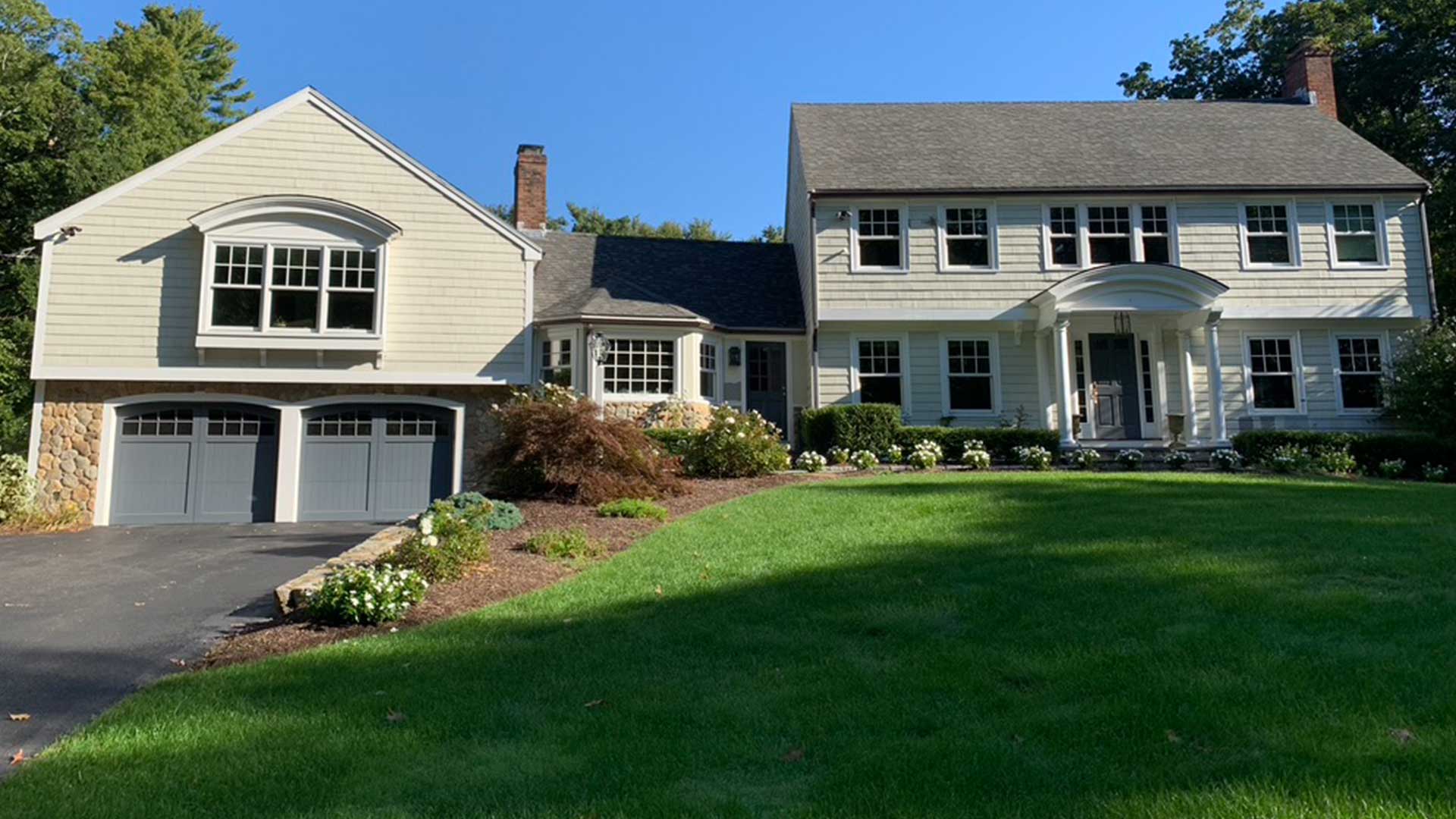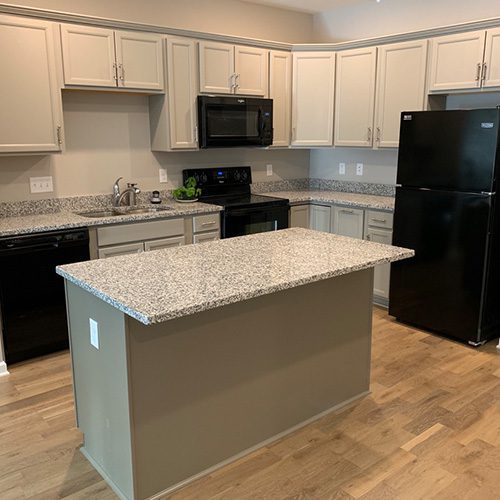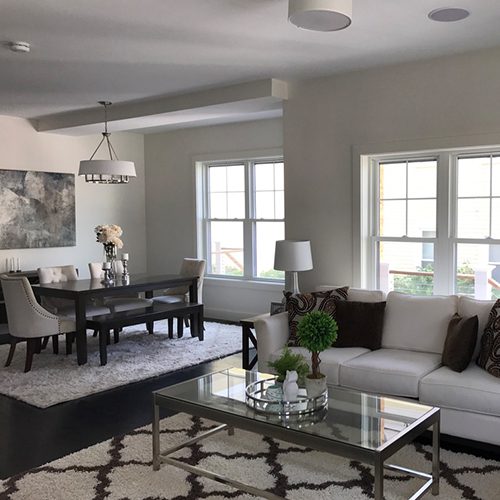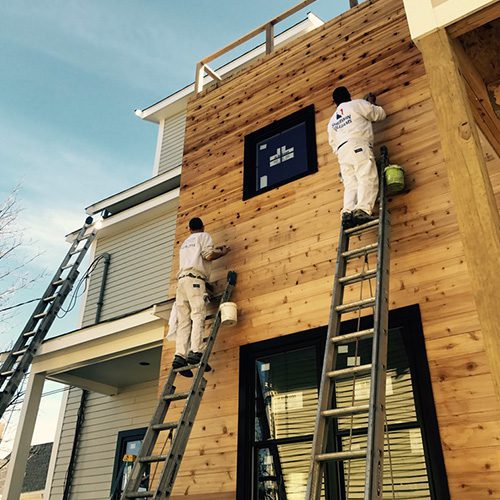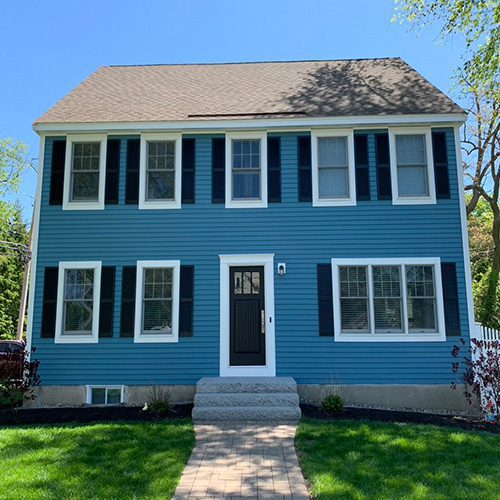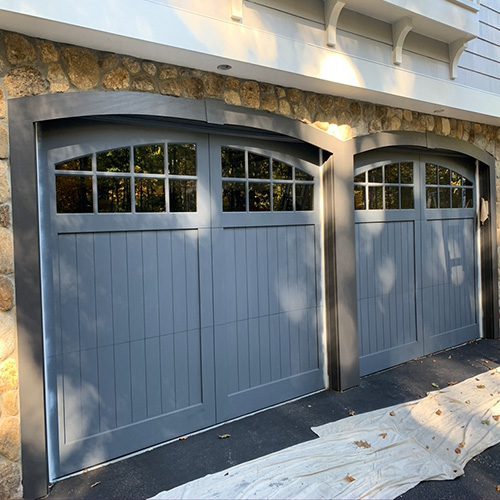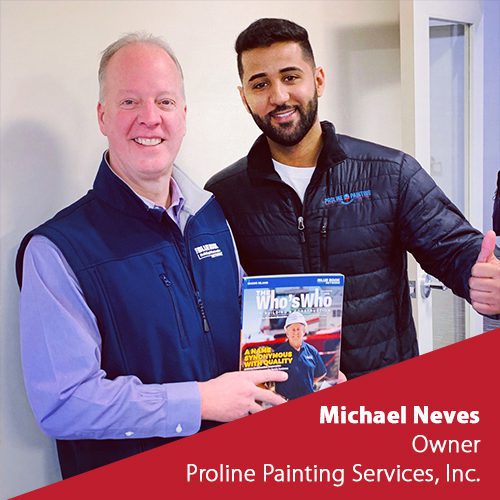Exterior House Painter Lowell MA
[geocentric_weather id=”d4d7eb42-0a7a-44c0-b607-ad29a7c765e5″]
Looking for an Exterior House Painter in Lowell, Massachusetts?
Are you a Homeowner? Business Owner? Property Manager? Or maybe someone just looking for more information on the best Lowell MA exterior house painter? You’re in the right place…DO YOU HAVE THESE PROBLEMS:
• Paint Chipping? • Time for a color change? • New Home Or Apartment?Proline Painting Services, a top-rated painter specializing in exterior house painting services, has helped thousands of Lowell homeowners, business owners, property managers, and other individuals in the Greater Boston, MA area. After some research, we’re confident you’ll find us to be the right exterior house painting contractor to handle your exterior painting project.
Why Choose
Proline Painting Services Is The Best Exterior House Painter Lowell MA?
In short…Because we have a reputation for quality work and being budget friendly. Our customer service is second to none. Our team is always responsive, courteous, friendly, and respectful.
At Proline Painting Services, we do it all! From conception to completion, we handle every aspect of your painting or restoration project. This integrated approach reduces project time and money by streamlining each phase of implementation and eliminating the delays that often plague sub-contracted projects.
With Proline Painting Services, you’ll receive:
- Quality workmanship that is guaranteed to last
- Work from licensed professionals who are honest and hardworking
- Dependable service that is completed on time and on budget
- Free estimates and a fully insured crew
To review the creativity of our work and the quality of our craftsmanship, simply take a look at our Photo Gallery. Our decades worth of painting projects speak for themselves! From custom commercial projects to house painting, and more — You can trust your project or business property to our team of experts.
Residential & Commercial
Full Service Painting Company
Kitchen Cabinet Refinishing
Lowell MA
Click Here
Interior House Painter
Lowell MA
Click Here
Lowell
Painting Company
Click Here
What Are The Benefits of Using Professional House Painters?
When you paint the outside of your home yourself, you risk making mistakes. While a quality paint job increases your home’s curb appeal, a bad one does the opposite. You get these benefits when you hire professional exterior house painters:
Professional Results
A professional paint job adds value to your home and lasts longer than an amateur paint job. Professionals also save you time and money.
Color Advise
With so many exterior house paint colors, it can be hard to pick one. We have experience with painting all types of Massachusetts residences, and we can advise you on the best color and paint type for your budget.
Safety
Painting involves high surfaces and specialized equipment. Our team has the proper training and certifications for exterior painting services. We have everything we need to prevent damage and disruption.
Exterior House Painters Who Emphasizes Preparation for a Magnificent Finish
Prep work comes first in a quality painting project. Before we apply paint to your exterior surface, we:
- Clean the surface with power washing and scraping
- Check to see if the area needs sanding or patching
- Inspect the surface for rot, mold, or other issues
Our thorough process ensures beautiful and lasting results. We inspect the work area first, which may uncover hidden problems. In professional exterior painting services, we know that a solid start is the key to a fantastic finish.
When we complete the job, we check for flakes, debris, and chips. We also clean up the area and leave it the way we found it.
Exterior painting preparation helps everything go smoothly. We plan well and keep you informed so that you can have peace of mind.
What Makes Us Different?
FULLY INSURED
We’re fully insured and bonded to handle all requests.
budget Friendly
We're willing to discuss projects constrained by a budget.
Quick Service
We show up on time and finish ahead of schedule regularly.
Friendly Team
Our crew is pleasant and easy to talk to on the job site.
House Painting Tips
No matter the size of your house, painting it is a big undertaking. These exterior house painting tips will help you get the best result:
- Buy quality tools. While you want to save money, you don’t want a cheap-looking home. Invest in a few synthetic-bristle brushes with different edges. You should also buy a heavy-duty roller, paint cans, and a bucket.
- Watch the weather. If you paint in direct sunlight, the heat will dry your paint too fast. You also don’t want to paint when you have a risk of high winds or rain. Check the paint label to see the recommended environment.
- Check for lead. If you have an old home or building, you may want to get a lead test kit to avoid exposing yourself or others to lead paint.
- Clean the exterior. Dirt and grime will ruin your fresh paint. Use a cleaner that works on mildew or hire a professional power washer.
When you hire us for exterior painting services, we’ll take care of all of these items for you.
How to Choose Exterior House Paint Colors
Your interior colors typically reflect your style. With the outside of your home, you also have to keep in mind:
- Durability
- The colors of your patio or other accents
- Trim color
- Neighborhood
- Climate
When choosing exterior house paint colors, plan to invest in a premium brand that resists stains and weather. If you have brick or stone near your home, try picking one of their underlying tones. You can choose an opposing color instead of a complementary one—for example, a warm color to contrast with a cooler tone.
Try using an online tool that will recommend coordinating or matching colors. These tools help you visualize the finished look with different color combos.
Finally, buy several test paints. Make sure you test colors on different sides of your home to see them in various lightings. Once you see the colors on your home, you can make a better judgment on which one looks best.
Talk to an Expert
We understand that sometimes you just want to talk before scheduling a consultation. Our team will gladly answer any of your questions or help you with any of your concerns.
Call Mike now! — (617) 838-3014
Testimonials From Happy Customers
★★★★★
Top-Rated House Painters
Focused On Quality Craftsmanship And Customer Service
Request A Free Quote Today!
We'd be happy to come evaluate your property, discuss your needs, and provide you with a competitive, no-obligation ESTIMATE.
Kitchen Cabinet Refinishing
Lowell MA
Click Here
Interior House Painter
Lowell MA
Click Here
Lowell
Painting Company
Click Here
MAP OF Lowell, MA
[geocentric_mapembed id=”d4d7eb42-0a7a-44c0-b607-ad29a7c765e5″]
Lowell OVERVIEW
Lowell, Massachusetts | |
|---|---|
City | |
| City of Lowell | |
    Left-right from top: Lowell City Hall, Lowell mills, University of Massachusetts Lowell, Lowell Skyline | |
 Flag  Seal | |
| Nickname(s): Mill City, Spindle City, City of Lights City of Magic | |
| Motto: “Art is the Handmaid of Human Good.” | |
 Location in Middlesex County in Massachusetts | |
 Lowell Location in the United States  Lowell Lowell (the United States) | |
| Coordinates: 42°38′22″N 71°18′53″W / 42.63944°N 71.31472°WCoordinates: 42°38′22″N 71°18′53″W / 42.63944°N 71.31472°W | |
| Country | |
| State | |
| County | Middlesex |
| Region | New England |
| Settled | 1652 |
| Incorporated | 1826 |
| A city | 1836 |
| Named for | Francis Cabot Lowell |
| Government | |
| • Type | Manager-City council |
| • Mayor | Sokhary Chau |
| • City Manager | Thomas Golden Jr. |
| Area | |
| • Total | 14.53 sq mi (37.63 km) |
| • Land | 13.61 sq mi (35.25 km2) |
| • Water | 0.92 sq mi (2.38 km) |
| Elevation | 102 ft (31 m) |
| Population (2020) | |
| • Total | 115,554 |
| • Density | 8,489.75/sq mi (3,278.02/km2) |
| • Demonym | Lowellian |
| Time zone | UTC−5 (Eastern) |
| • Summer (DST) | UTC−4 (Eastern) |
| ZIP code | 01850, 01851, 01852, 01853, 01854 |
| Area code | 978 / 351 |
| FIPS code | 25-37000 |
| GNIS feature ID | 0611832 |
| Website | City of Lowell, Massachusetts |
 Flag of Lowell | |
| Mill Mayor flag | |
| Adopted | 1986 |
|---|---|
| Relinquished | 5 December 2001 (Readopted in 2009) |
| Design | City seal behind a White Background |
| Designed by | William Ckrocker |
Lowell is a city in Massachusetts, in the United States. Alongside Cambridge, It is one of two traditional seats of Middlesex County. With an estimated population of 115,554 in 2020, it was the fifth most populous city in Massachusetts as of the last census, and the third most populous in the Boston metropolitan statistical area. The city also is part of a smaller Massachusetts statistical area, called Greater Lowell, and of New England’s Merrimack Valley region.
Incorporated in 1826 to serve as a mill town, Lowell was named after Francis Cabot Lowell, a local figure in the Industrial Revolution. The city became known as the cradle of the American Industrial Revolution because of its textile mills and factories. Many of Lowell’s historic manufacturing sites were later preserved by the National Park Service to create Lowell National Historical Park. During the Cambodian genocide (1975–1979), the city took in an influx of refugees, leading to a Cambodia Town and America’s second largest Cambodian-American population.
Lowell is home to two institutions of higher education. UMass Lowell, part of the University of Massachusetts system, has three campuses in the city. Middlesex Community College’s two campuses are in Lowell and in the town of Bedford, Massachusetts. Arts facilities in the city include the Whistler House Museum of Art, the Merrimack Repertory Theatre, the Lowell Memorial Auditorium, and Sampas Pavilion. In sports, the city has a long tradition of boxing, hosting the annual New England Golden Gloves boxing tournament. The city has a baseball stadium, Edward A. LeLacheur Park, and a multipurpose indoor sports arena, the Tsongas Center, both of which have hosted collegiate and minor-league professional sports teams.
ABOUT Lowell, MA
History
Founded in the 1820s as a planned manufacturing center for textiles, Lowell is located along the rapids of the Merrimack River, 25 mi (40 km) northwest of Boston in what was once the farming community of East Chelmsford, Massachusetts. The so-called Boston Associates, including Nathan Appleton and Patrick Tracy Jackson of the Boston Manufacturing Company, named the new mill town after their visionary leader, Francis Cabot Lowell, who had died five years before its 1823 incorporation. As Lowell’s population grew, it acquired land from neighboring towns, and diversified into a full-fledged urban center. Many of the men who composed the labor force for constructing the canals and factories had immigrated from Ireland, escaping the poverty and Great Famine of the 1830s and 1840s. The mill workers, young single women called Mill Girls, generally came from the farm families of New England.
By the 1850s, Lowell had the largest industrial complex in the United States. The textile industry wove cotton produced in the Southern United States. In 1860, there were more cotton spindles in Lowell than in all eleven states combined that would form the Confederate States of America. Many of the coarse cottons produced in Lowell eventually returned to the South to clothe enslaved people, and, according to historian Sven Beckert, “‘Lowell’ became the generic term slaves used to describe coarse cottons.” The city continued to thrive as a major industrial center during the 19th century, attracting more migrant workers and immigrants to its mills. Next were the Catholic Germans, followed by a large influx of French Canadians during the 1870s and 1880s. Later waves of immigrants came to work in Lowell and settled in ethnic neighborhoods, with the city’s population reaching almost 50% foreign-born by 1900. By the time World War I broke out in Europe, the city had reached its economic peak.
The Mill Cities’ manufacturing base declined as companies began to relocate to the South in the 1920s. The city fell into hard times, and was even referred to as a “depressed industrial desert” by Harper’s Magazine in 1931, as the Great Depression worsened. At this time, more than one third of its population was “on relief” (government assistance), as only three of its major textile corporations remained active. Several years later, the mills were reactivated, making parachutes and other military necessities for World War II. However, this economic boost was short-lived and the post-war years saw the last textile plants close.
Zoning, development and the Massachusetts Miracle
In the 1970s, Lowell became part of the Massachusetts Miracle, being the headquarters of Wang Laboratories. At the same time, Lowell became home to thousands of new immigrants, many from Cambodia, following the genocide at the hands of the Khmer Rouge. The city continued to rebound, but this time, focusing more on culture. The former mill district along the river was partially restored and became part of the Lowell National Historical Park, founded in the late 1970s.
Although Wang went bankrupt in 1992, the city continued its cultural focus by hosting the nation’s largest free folk festival, the Lowell Folk Festival, as well as many other cultural events. This effort began to attract other companies and families back to the urban center. Additional historic manufacturing and commercial buildings were adapted as residential units and office space. By the 1990s, Lowell had built a new ballpark and arena, which became home to two minor league sports teams, the Lowell Devils and Lowell Spinners. The city also began to have a larger student population. The University of Massachusetts Lowell and Middlesex Community College expanded their programs and enrollment. During the period of time when Lowell was part of the Massachusetts Miracle, the Lowell City Development Authority created a Comprehensive Master Plan which included recommendations for zoning adaptations within the city. The city’s original zoning code was adopted in 1926 and was significantly revised in 1966 and 2004, with changes included to respond to concerns about overdevelopment.
In 2002, in lieu of updating the Comprehensive Master Plan, more broad changes were recommended so that the land use and development would be consistent with the current master plan. The most significant revision to the 1966 zoning code is the adoption of an inclusion of a transect-based zoning code and some aspects of a form-based code style of zoning that emphasizes urban design elements as a means to ensure that infill development will respect the character of the neighborhood or district in question. By 2004, the recommended zoning changes were unanimously adopted by the City Council and despite numerous changes to the 2004 Zoning Code, it remains the basic framework for resolving zoning issues in Lowell to this day.
The Hamilton Canal District (HCD) is the first district in Lowell in which regulation and development is defined by Form-Based Code (HCD-FBC) and legislated by its own guiding framework consistent to the HCD Master Plan. The HCD is a major redevelopment project that comprises 13-acres of vacant, underutilized land in downtown Lowell abutting former industrial mills. Trinity Financial was elected as the Master Developer to recreate this district with a vision of making a mixed-use neighborhood. Development plans included establishing the HCD as a gateway to downtown Lowell and enhanced connectivity to Gallagher Terminal.
Anti-crime efforts
THINGS TO DO Lowell
[geocentric_thingstodo id=”d4d7eb42-0a7a-44c0-b607-ad29a7c765e5″]
DRIVING DIRECTIONS
[geocentric_drivingdirections id=”d4d7eb42-0a7a-44c0-b607-ad29a7c765e5″]
NEIGHBORHOODS
[geocentric_neighborhoods id=”d4d7eb42-0a7a-44c0-b607-ad29a7c765e5″]
BUS STOPS
[geocentric_busstops id=”d4d7eb42-0a7a-44c0-b607-ad29a7c765e5″]


